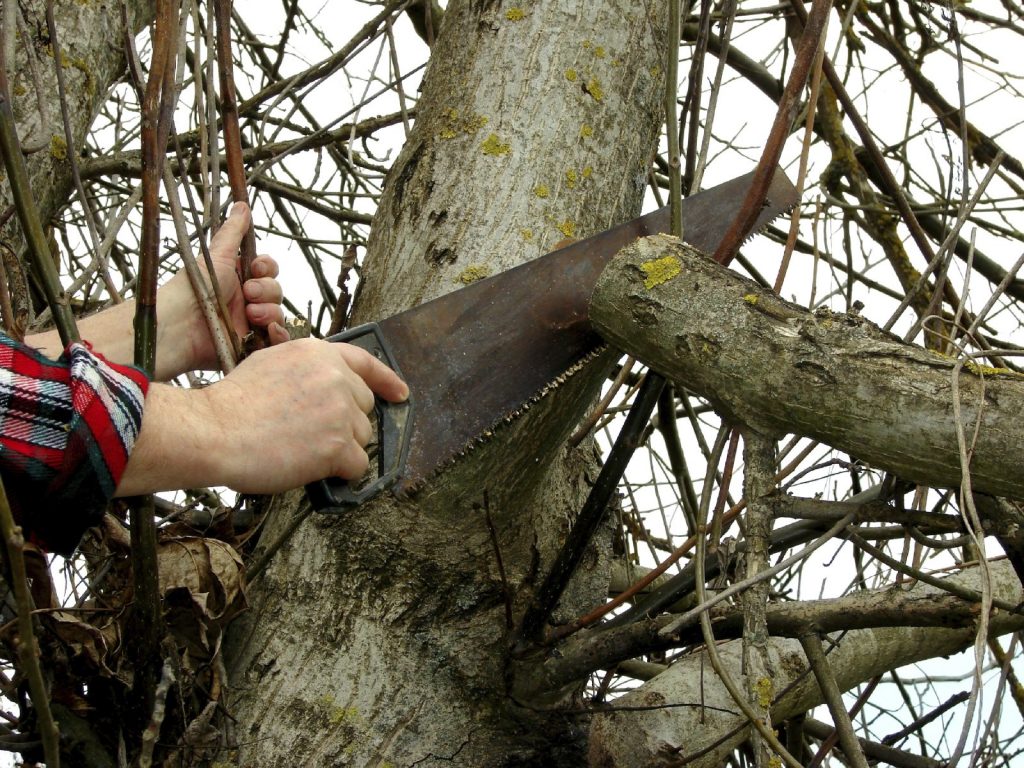Written by Lou Paun and published on https://homeguides.sfgate.com/.
Sometime between the changing leaves in fall and flower blooms in spring, your trees need a trim. Anytime between late fall and early spring is best for tree trimming or pruning.
Talk to your local arborist about pruning before spring blooms emerge. Typically a tree’s pruning cycle is 3 to 5 years, but type, size and health play a role in the cycle that will work best for your tree.
Table of Contents
Best Time of Year to Trim a Tree

No homeowner wants huge, overgrown trees in the yard. They are unsightly and can be dangerous. Homeowners can prune small trees themselves, using loppers and handsaws. Large trees, or any trees growing near electrical lines, should be pruned by professionals. Many homeowners don’t really know when to trim their trees to prevent problems. An old adage says “trees should be trimmed when the saw is sharp,” but there is a best and worst time to prune a tree.
Why Prune a Tree
Trees are pruned to maintain their health, removing damaged or diseased growth. They are pruned to increase safety. Low-hanging branches that snag pedestrians, trees that block sight at the end of a driveway, branches that hang over buildings and branches near electrical lines pose dangers to people. Trees are also pruned for aesthetic reasons, to improve their looks or limit their growth.
Best Pruning Time
The best time to prune a tree is in late winter, just before the tree breaks dormancy. The cut will heal quickly because trees grow vigorously in early spring. A few trees, like magnolias, flower on wood grown the previous year. Early pruning could easily remove all the dormant buds, resulting in a non-flowering tree. These trees, and shrubs that bloom on old growth, should be pruned just after they flower.
Worst Pruning Time
The only really bad time to prune a tree is in spring while the buds are developing. If the buds are beginning to swell, leave the tree alone until the leaves have grown to their mature size. Then it is safe to prune. Trimming a tree while the leaves are expanding disturbs the tree’s growth and causes it a lot of stress.
Emergency Pruning
If a tree is damaged, it can be trimmed any time of the year. Broken or scraped branches are an invitation to disease and insects. Prune the tree as soon as possible after the damage occurs.
Where to Cut
When pruning a tree, always cut outside the branch collar. This is the swollen area where the branch meets the tree. It helps support the weight of the branch. If it is damaged, the pruning cut will heal slowly, endangering the tree’s health. Cut as near the branch collar as possible without nicking it. Don’t leave a stub; they invite insects and disease.
Treating the Cut
Don’t seal the cut, attempt to sterilize it or treat it in any way. Left alone, the tree will quickly grow a layer of cells over the cut. Any treatment delays healing. In the past, homeowners were often advised to paint or seal the cut, and many products are still on the market for this purpose. Don’t use them.
Original post here https://homeguides.sfgate.com/best-time-of-year-to-trim-a-tree-13429171.html.

